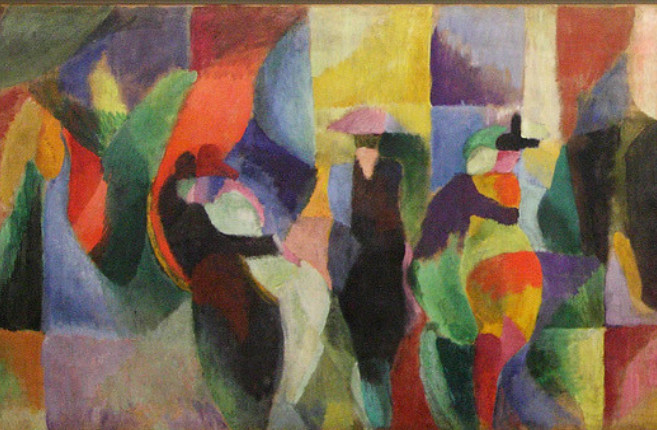1913
Bal Bullier
author
Sonia Delaunay
description
Collection of Center Pompidou, Paris, France.
Oil on mattress ticking.
The flow of colour and rhythm depicts several pairs (or one rotating in dance) under multi-coloured electric lights – the latest Parisian sensation. The painting was panoramic and the largest of the four versions – 3.9 m long and was the first work where the artist used contrasting colours such as blue and orange, located next to each other for maximum intensity. The work is an excellent example of orphism due to the combination of colours and forms that dominated the author’s works in the 1910s. A number of couples under the dome lights positively explode with spots of bright colours, demonstrating the author’s interest in the theory of simultaneous colours. She investigated the visual effect of combining the original paint with the secondary one – this technical discovery made it possible to enhance the colour of the paintings by manipulation: to place the colours on the canvas in a special way. To maximize the effect, Delaunay exposes dancers against a background where the colours are contrasted: red next to green, yellow with violet-blue. The gamma perfectly reflects the excitement and energy of the famous dance hall.
